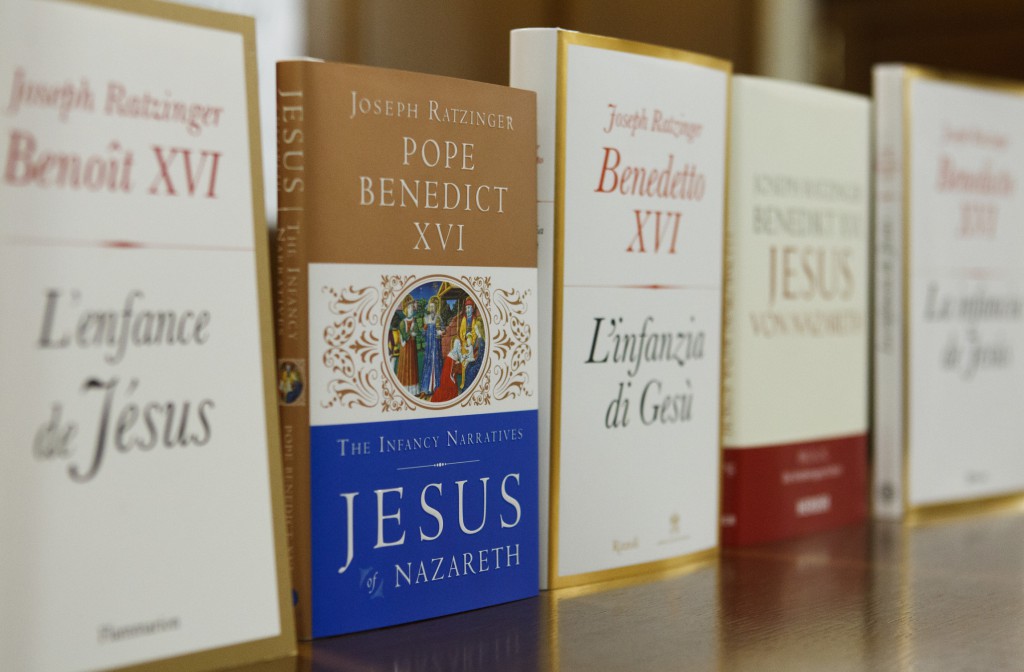
The November 21 publication of Jesus of Nazareth: The Infancy Narratives, which completes Pope Benedict XVI’s popular three-volume series on the life and teachings of Christ, is the latest reminder of the author’s prolific output, now amounting to more than 60 books.
One of the most prominent theologians of his generation, Pope Benedict has produced studies in a wide range of specialised fields, including Mariology, Christology, ecclesiology, ecumenism and eschatology.
He has written collections of prayers, meditations and even an autobiography, all displaying his characteristic combination of rigorous scholarship and a lucid style accessible to the educated general reader.
And then there are his official papal documents, including an encyclical on the virtue of faith expected to appear in early 2013.
Pope Benedict’s literary accomplishments clearly distinguish him from the ranks of Church leaders past and present. Yet he is not the only distinguished writer ever to have occupied the papal throne.
Among the works of St Gregory I (590-604), known as “Gregory the Great,” is The Dialogues, which historian Eamon Duffy has called “one of the most influential books of the Middle Ages.”
A collection of biographies of 6th-century Italian saints, it gives most attention to St Benedict of Nursia, the founder of Western monasticism.
The chapter titles clearly convey St Gregory’s emphasis on miracles, as well as his storyteller’s knack for grabbing the reader’s attention: “How Benedict, by the sign of the Holy Cross, broke a drinking glass in pieces”; “How a loaf was poisoned, and carried far off by a crow”; and “How the man of God knew that one of his monks had received certain handkerchiefs.”
A former monk himself, who unhappily gave up contemplative life when he was elected pope, St Gregory wrote a set of guidebooks, Pastoral Care, on the proper selection of priests, the virtues necessary for pastoral life and the need for variety in preaching to different audiences.
“For the things that profit some often hurt others,” St Gregory writes; “the medicine which abates one disease aggravates another; and the food which invigorates the life of the strong kills little children.”
A different writer for a different age was Pope Pius II (1458-64), formerly Aeneas Silvio Piccolomini, a famous Renaissance humanist scholar and writer. A libertine in his youth, with several illegitimate children, he renounced his dissolute ways at the age of 40 and became a priest. But his notorious novel, Tale of Two Lovers, remained as a legacy of his former life.
Scandalous in another sense is Pope Pius’s 13-volume autobiography, The Commentaries, written after he became pope, which recount the intrigue and ambition of the Renaissance papal court in fascinating first-hand detail.
Not least among the current pope’s literary forerunners was the man who immediately preceded him. Blessed John Paul was not only an academic philosopher but a poet and playwright. He was especially active as a creative writer in his 20s and 30s, as a priest in post-war Communist Poland.
Blessed John Paul’s play Our God’s Brother is based on the true story of a Polish painter who founded a mendicant religious order. Another play, The Jeweller’s Shop, the story of three marriages, presents matrimony as not merely a sentimental relationship but an image of Trinitarian love.
The future pope’s poetry draws directly on his youthful experiences, including work in a quarry.
“His muscles grew into the flesh of the crowd, energy their pulse. As long as they held a hammer, as long as his feet felt the ground,” Blessed John Paul writes in The Quarry. “But the man has taken with him the world’s inner structure, where the greater the anger, the higher the explosion of love.”- CNS